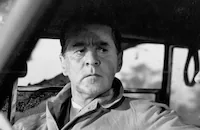Dreams

Brief Synopsis
Cast & Crew
Ingmar Bergman
Harriet Andersson
Eva Dahlbeck
Gunnar Björnstrand
Millan Lyxell
Naima Wifstrand
Film Details
Technical Specs
Synopsis
A woman goes on vacation to meet her married lover, but their plans are thwarted by his wife. She then leaves and meets a wealthy, but self-centered man who charms her, but she cannot return his desires. She returns to Stockholm unfulfilled.
Director

Ingmar Bergman
Cast

Harriet Andersson

Eva Dahlbeck

Gunnar Björnstrand
Millan Lyxell
Naima Wifstrand

Ingmar Bergman
Richard Mattsson
Curt Karrby
Git Gay
Inga Rosqvist
Axel Duberg
Carl-gustaf Lindstedt
Maud Hyttenberg
Gunhild Kjellqvist
Asta Beckman
Marianne Nielsen
Kerstin Hedeby-pawlo
Ninni Arpe
Tord Stal
Sven Lindberg
Bengt Schott
Renee Bjorling
Jessie Flaws
Inga Landgré
Per-erik Astrom
Gerd Widestedt
Elsa Hovgren
Margareta Bergstrom
Ella Welander
Ludde Gentzel
Folke Astrom
Benkt-ake Benktsson
Inga Gill
Greta Stare
Ulf Palme
Crew
Hans Abramson
Ingmar Bergman
Gosta Bjork
Sven Bjorling
Hilding Bladh
Hilding Bladh
Lars-owe Carlberg
Katinka Farago
Stuart Gorling
Gittan Gustafsson
Sture Höglund
Olle Jakobsson
Keddy Jansson
Gunnar Jonsson
Charlie Norman
Ludo Philipp
Charles Pierre
Carl-olov Skeppstedt
Richard Thorpe
Rune Waldekranz
Bertil Wiktorsson
Film Details
Technical Specs
Articles
Dreams (1955)
In Dreams, Susanne (Eva Dahlbeck), the head of a model agency in Stockholm, and Doris (Harriet Andersson), a flighty young model, travel to Gothenburg for a photo shoot. While there, Susanne reconnects with her married ex-lover (Ulf Palme), and Doris meets and spends the day with an older man (Gunnar Bjornstrand), a diplomat, who buys her expensive clothing and jewelry. Both encounters end badly, and the two women return to Stockholm changed by their experiences. The script is witty and poignant, the characters well-defined and keenly observed. Bergman's visual style, after a decade of making films, is assured, focused, polished, the compositions striking. The actors, several of whom worked repeatedly with Bergman, are expressive and nuanced.
As was often the case throughout Bergman's career, he was involved with one of his leading ladies during the production of Dreams, and part of the film's story has roots in his personal life. Susanne, the fashion executive hoping for a reunion with her ex-lover, was based on Gun Hagberg, the journalist for whom Bergman had left his second wife. Three years earlier, Bergman, by then married to Hagberg, had cast 20-year old actress Harriet Andersson in the title role of Summer With Monika and the two had begun an affair, which was coming to an end during the production of Dreams. It was a difficult period for Bergman. His private life was in turmoil, and that may have clouded his assessment of the film. In later years he rarely discussed Dreams, and when he did, his comments were harsh. "It's a boring film. I must have been tired when I made it. It wasn't a good time," he said.
Dreams script girl Katherina Farago describes Bergman during production as "screaming and hollering and very nervous. He wasn't very happy at the time and not very well...He was very thin, he had all these stomach problems." She recalled him berating and humiliating crew members. Dreams received bad reviews from Swedish critics, and did not do well at the box office. As Bergman biographer Jerry Vermilye noted, "Dreams was not a local success, not even with shopgirls."
By the time Dreams opened in the U.S. in 1960, Bergman had stunned audiences worldwide with three masterpieces, Smiles of a Summer Night, The Seventh Seal (1957), and Wild Strawberries (1957), and American critics were perhaps overly-generous in their appraisal of Dreams as a result. "Though seemingly slick and melodramatic on the surface, the keen notations, solid narrative, and expert blending of direction and acting make this a deep tale of emotional upheavals," Wrote Mosk in Variety. According to the Saturday Review's Arthur Knight, "Although hardly on a level with his works of more recent vintage, Dreams reveals Bergman in full technical control of each element--actors, camera, lighting, sound....There is nothing wasted, no pauses for pretty scenery or repetitive action. He doesn't need them....obviously what animates him is his theme, not the effects he can introduce to put it across." Paul V. Beckley's review in the New York Herald Tribune was more subdued: "It is almost without the symbolist touches Bergman so often employs and, for all that it is a minor work, one might say now a work of portent rather than achievement, it is none the less an intriguing picture." In her rave 1961 article onSmiles of a Summer Night, New Yorker critic Pauline Kael compared Dreams and two earlier Bergman films to "early attempts or drafts....There were scattered lovely moments, as if Bergman's eye were looking ahead to the visual elegance of Smiles of a Summer Night."
Director: Ingmar Bergman
Producer: Rune Waldekranz
Screenplay: Ingmar Bergman
Cinematography: Hilding Bladh
Editor: Karl-Olov Skeppstedt
Art Direction: Gittan Gustafsson
Music: Stuart Gorling
Principal Cast: Eva Dahlbeck (Susanne Frank), Harriet Andersson (Doris), Gunnar Bjornstrand (Otto Sonderby, the Consul), Ulf Palme (Henrik Lobelius), Inga Landgre (Marta Lobelius), Sven Lindberg (Palle), Kerstin Hedeby-Pawlo (Otto's daughter), Bengt-Ake Bengtsson (Magnus, the Director)
87 Minutes
by Margarita Landazuri

Dreams (1955)
Quotes
Trivia
Miscellaneous Notes
Released in United States 1960
Released in United States on Video December 1985
Released in United States Winter January 1, 1955
Released in United States 1960
Released in United States Winter January 1, 1955
Released in United States on Video December 1985













